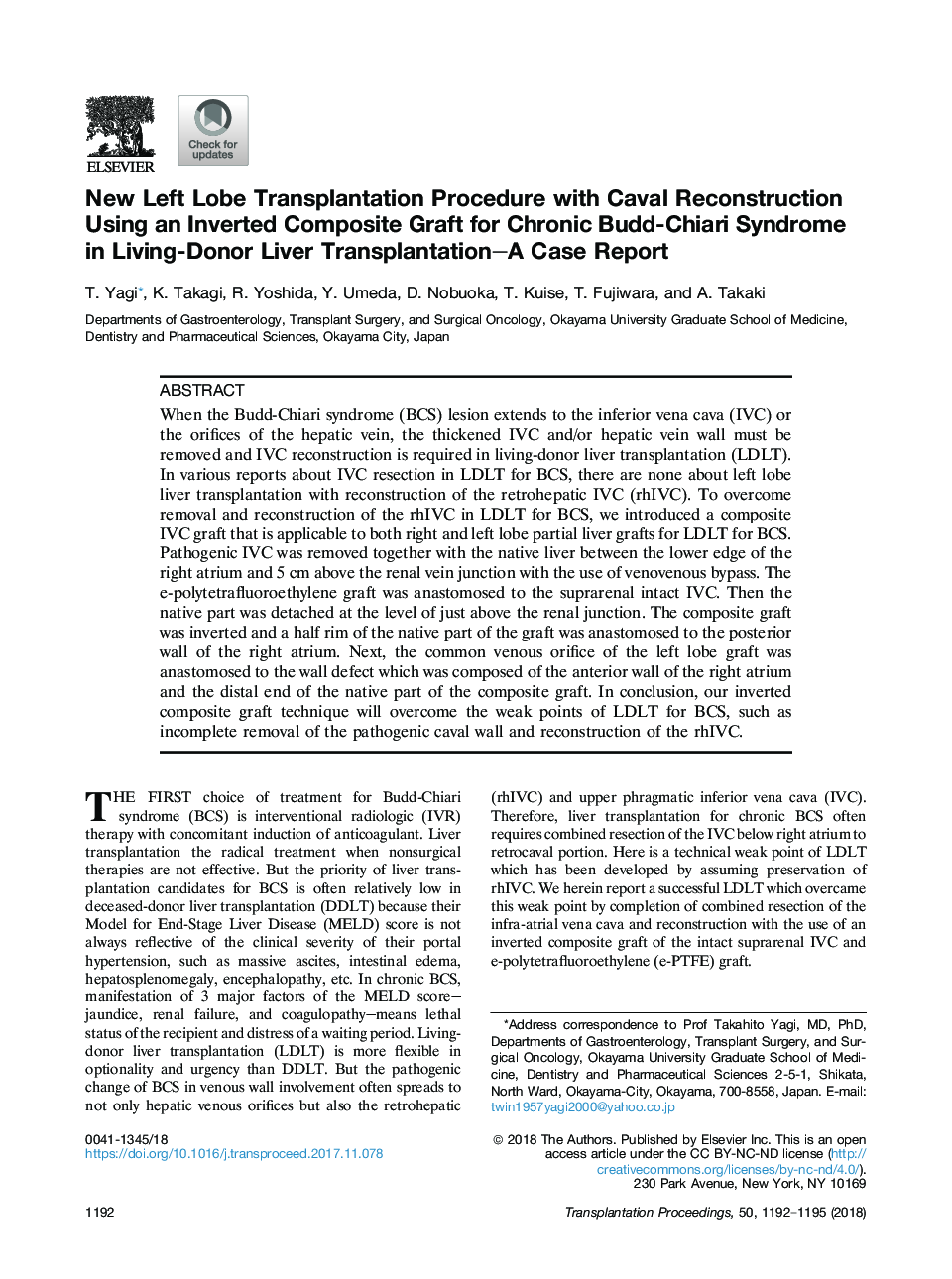| Article ID | Journal | Published Year | Pages | File Type |
|---|---|---|---|---|
| 8827151 | Transplantation Proceedings | 2018 | 4 Pages |
Abstract
When the Budd-Chiari syndrome (BCS) lesion extends to the inferior vena cava (IVC) or the orifices of the hepatic vein, the thickened IVC and/or hepatic vein wall must be removed and IVC reconstruction is required in living-donor liver transplantation (LDLT). In various reports about IVC resection in LDLT for BCS, there are none about left lobe liver transplantation with reconstruction of the retrohepatic IVC (rhIVC). To overcome removal and reconstruction of the rhIVC in LDLT for BCS, we introduced a composite IVC graft that is applicable to both right and left lobe partial liver grafts for LDLT for BCS. Pathogenic IVC was removed together with the native liver between the lower edge of the right atrium and 5 cm above the renal vein junction with the use of venovenous bypass. The e-polytetrafluoroethylene graft was anastomosed to the suprarenal intact IVC. Then the native part was detached at the level of just above the renal junction. The composite graft was inverted and a half rim of the native part of the graft was anastomosed to the posterior wall of the right atrium. Next, the common venous orifice of the left lobe graft was anastomosed to the wall defect which was composed of the anterior wall of the right atrium and the distal end of the native part of the composite graft. In conclusion, our inverted composite graft technique will overcome the weak points of LDLT for BCS, such as incomplete removal of the pathogenic caval wall and reconstruction of the rhIVC.
Related Topics
Health Sciences
Medicine and Dentistry
Surgery
Authors
T. Yagi, K. Takagi, R. Yoshida, Y. Umeda, D. Nobuoka, T. Kuise, T. Fujiwara, A. Takaki,
